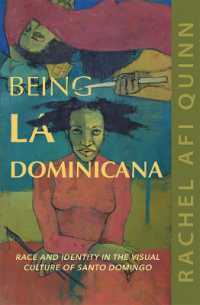- ホーム
- > 洋書
- > 英文書
- > Literary Criticism
基本説明
Incorporating a wealth of illuminating examples from literary and cultural texts, this fully updated second edition presents a new cultural texts, this fully updated second edition presents a new expanded conclusion on the future of intertextuality, focusing on the politics and aesthetics of the term and its relationship to global cultures and New Media.
Full Description
Theories of intertextuality suggest that meaning in a text can only ever be understood in relation to other texts; no work stands alone but is interlinked with the tradition that came before it and the context in which it is produced. This idea of intertextuality is crucial to understanding literary studies today.
Graham Allen deftly introduces the topic and relates its significance to key theories and movements in the study of literature.
The second edition of this important guide to intertextuality:
outlines the history and contemporary use of the term
incorporates a wealth of illuminating examples from literature and culture
includes a new, expanded conclusion on the future of intertextuality
examines the politics and aesthetics of the term
relates intertextuality to global cultures and new media.
Looking at intertextuality in relation to structuralism, post-structuralism, deconstruction, postcolonialism, Marxism, feminism and psychoanalytic theory, this is a fascinating and useful guide for all students of literature and culture.
Contents
Introduction 1. Origins: Saussure, Bakhtin, Kristeva 2. The Text Unbound: Barthes 3. Structuralist Approaches: Genette and Riffaterre 4. Situated Readers: Bloom, Feminism, Postcolonialism 5. Postmodern conclusions Conclusion 'The Futures of Intertextuality' Glossary Bibliography Index








